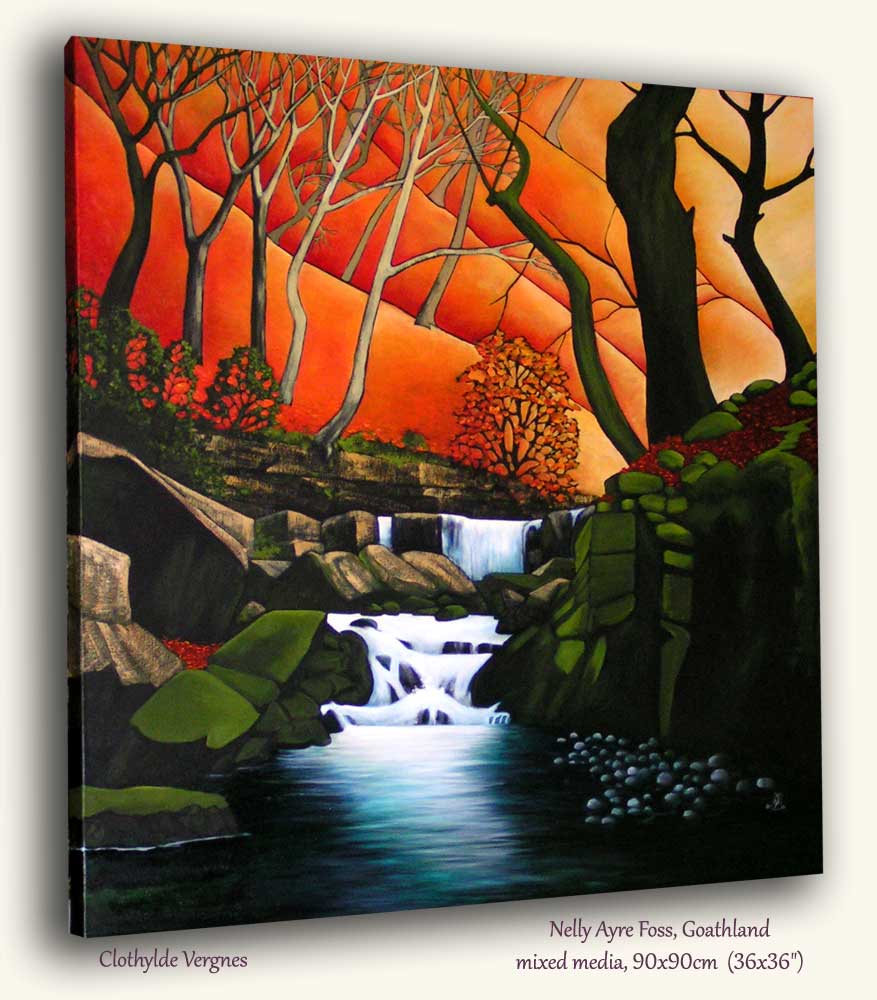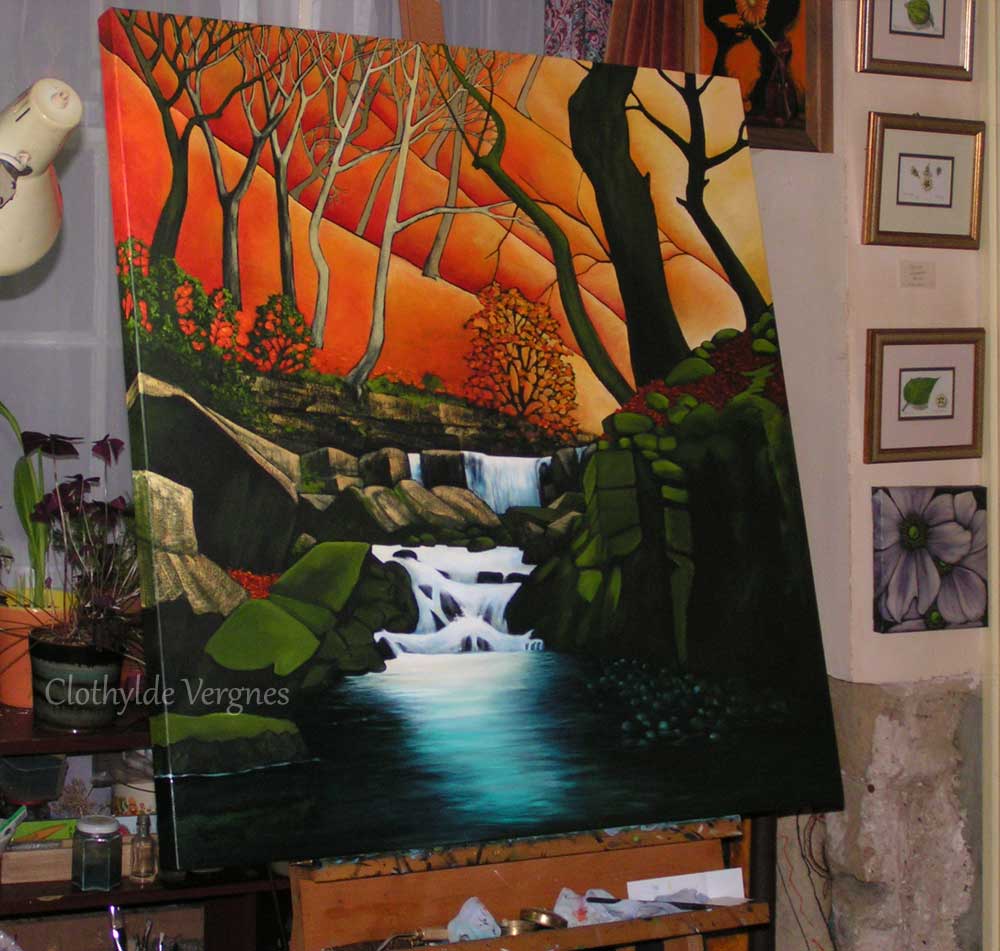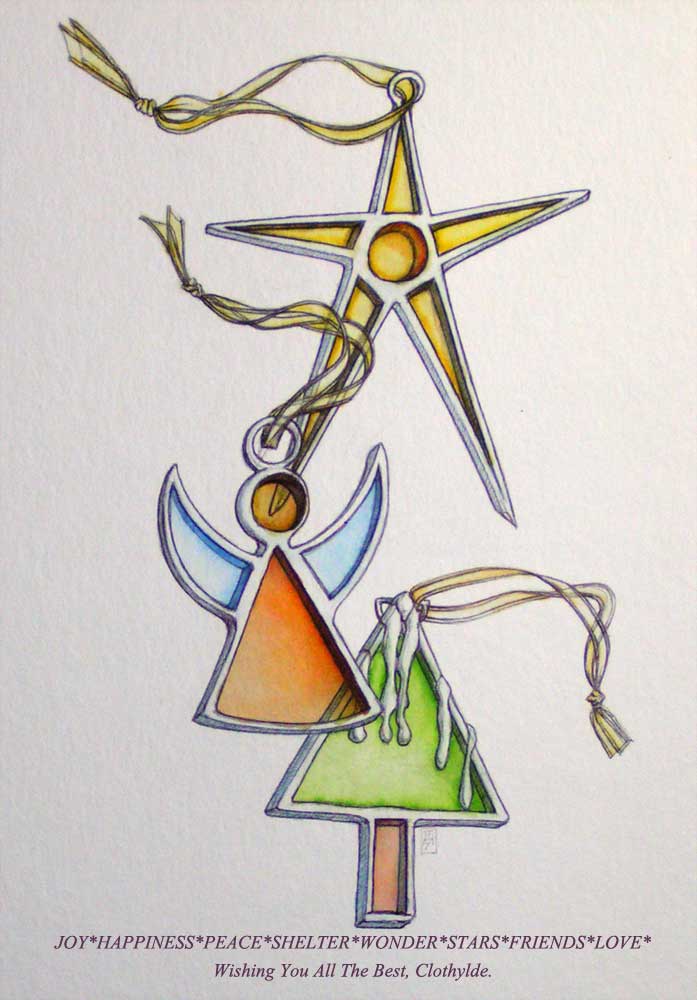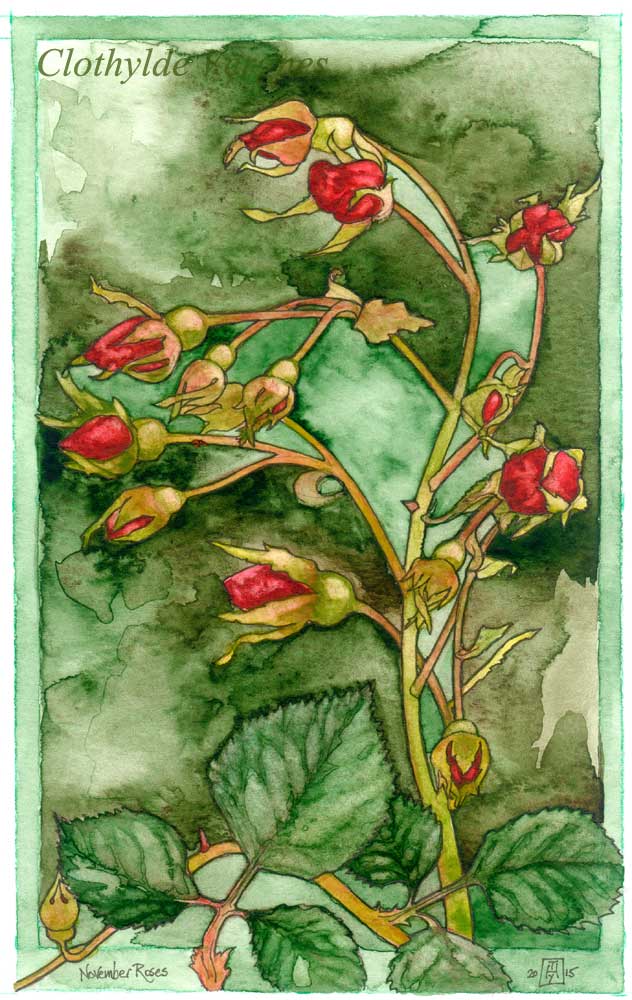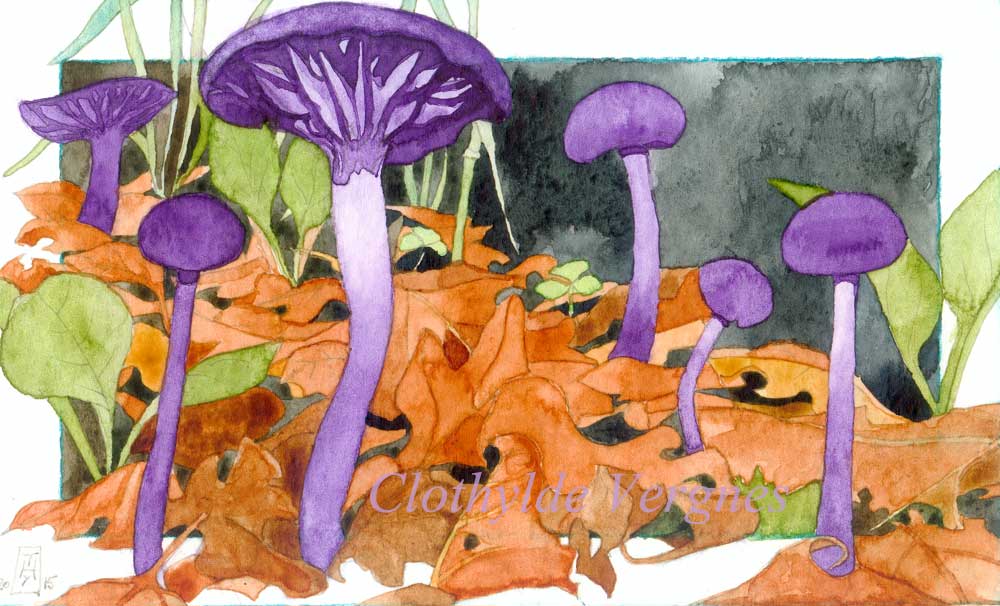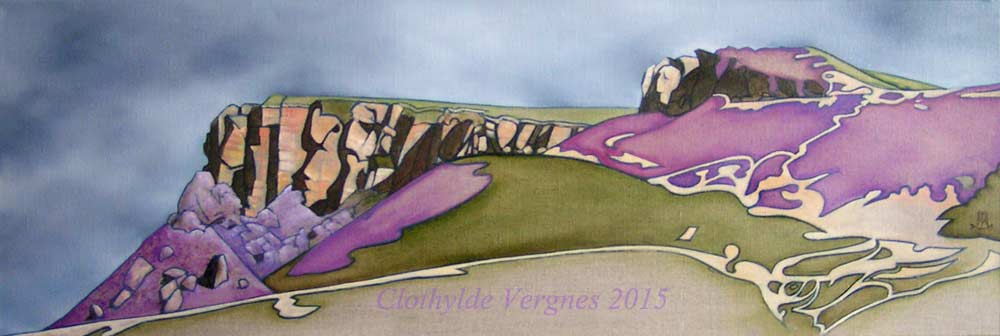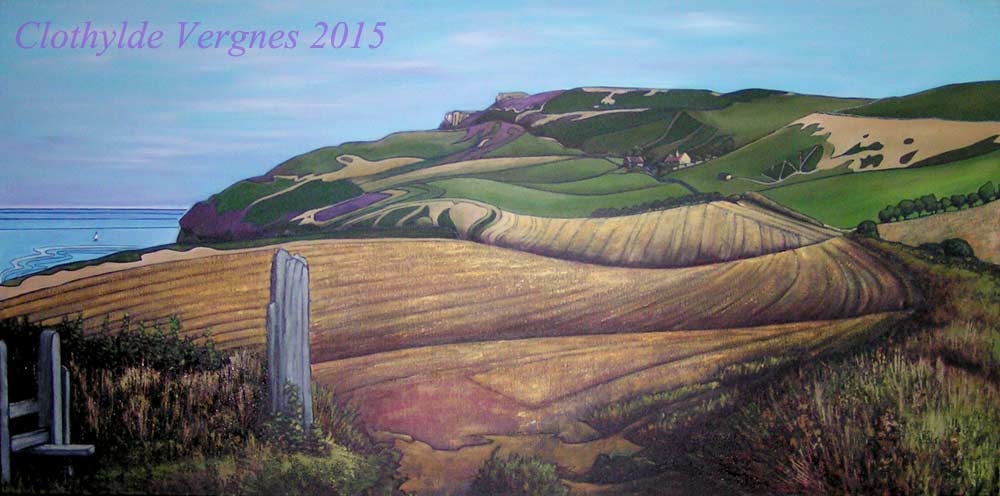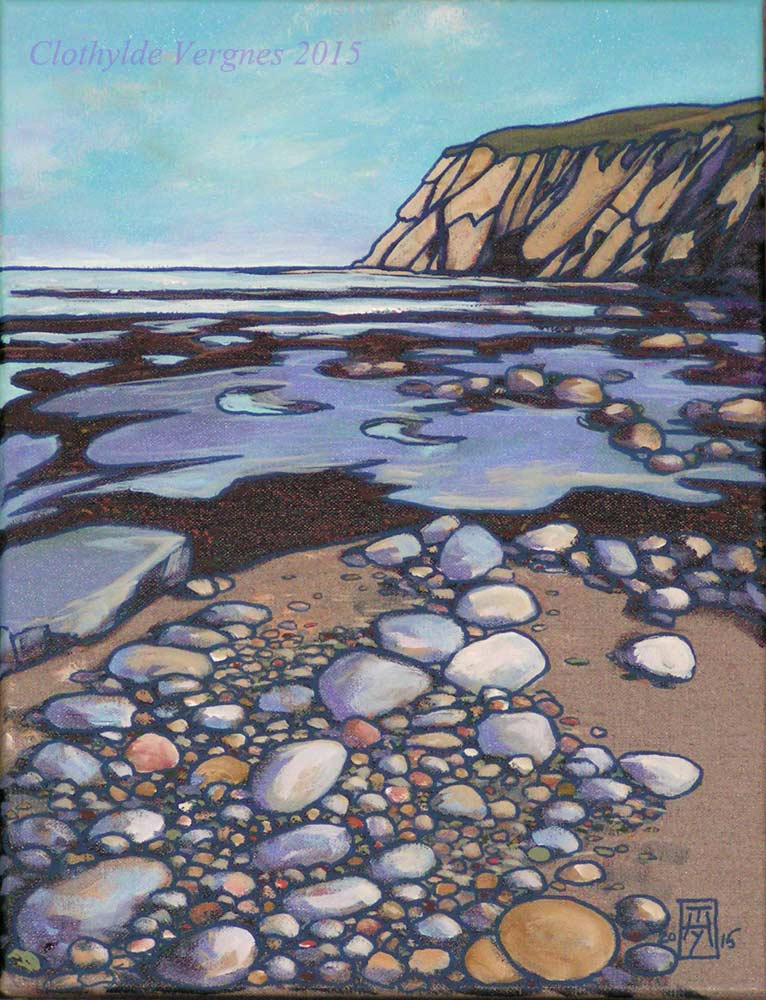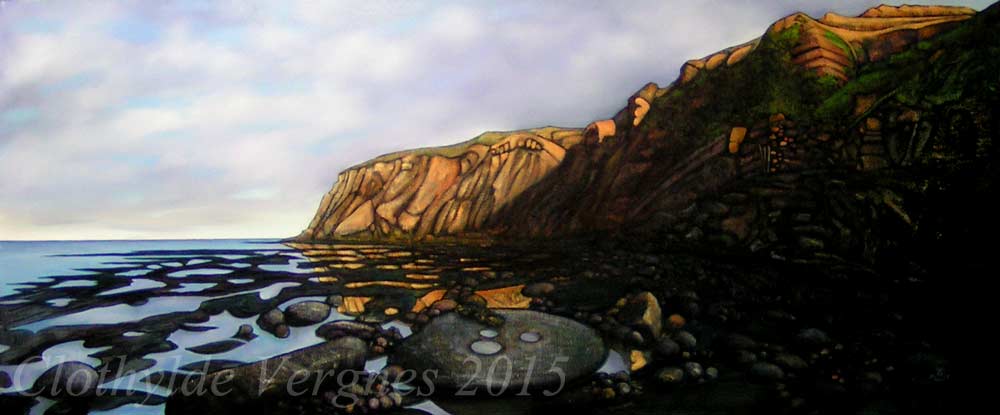The Stone Mason’s Yard
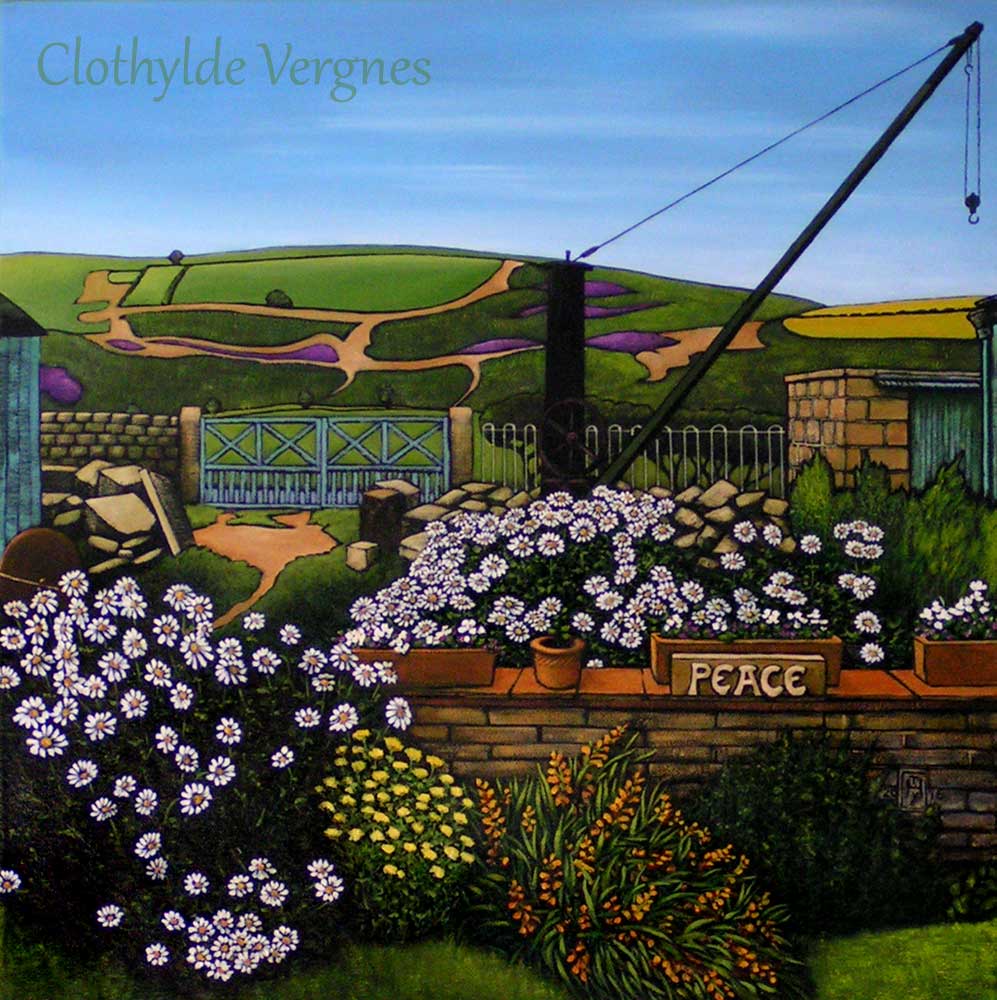
February is still a difficult month for me, seven years later … I often paint a picture for Steph. Last year, it was “Sledale”, on the way to the field where he is buried. My mother had reacted badly to the chemo, and the sky in my painting was very dark and brooding…
This year I decided to paint the yard where I went to pick up the stone for Steph’s grave. I thought I would like a dark sky again, with a bit of blue on the edge, but my many attempts at painting rolling clouds failed. Instead, it’s nothing but blue sky.
I take it as a reflection of my mental state. I’m fine. I miss him, and think of him everyday, but rather than cry, I feel so priviledged to have known and loved him.
PS. This painting is now sold.
Staithes

Maybeck window. oil on canvas, 50x50cm, 4cm deep (20×20″)
I started this painting in 2012, but didn’t get it finished til now. I love Maybeck, and that house. It is a quiet place. It has no mains electricity, so I painted one of my candlesticks. I also put in one of the roses from a bouquet I was given for my birthday, for friendship, and a strange old little box made of horn, for memories of the past.

2015 was a strange year for me, the first half being traumatic, stressful and sad, but there were also lots of good things and good people. I had more commissions, and sold more paintings, old and new, than in any previous year. Thank you. Thanks to the galleries which exhibit my work and thanks to those who bought my paintings (and prints, and cards, it all helps!), I was able to be with my mother when she needed me, without getting into debt. I couldn’t have done it without you.
Solstice
I’ve been busy painting and forgetting to update this website… so here’s some of what I’ve been doing, a series of small watercolours.
Hummersea
Hummersea is very close to my home on the North Yorkshire coast. At the foot of Boulby cliffs (amonst the highest cliffs in England), Hummersea is a pebble beach and its walls retain signs of its industrial past. Time and weather have carved its stones, and our propensity for anthropomorphism leads us to perceive faces, appropriately enough, in the rock face.
Faces on the cliffs
Memories of lovers lost
Looking out to sea.
From further back, the faces disappear, and the headland is reminiscent of a giant whale. The whaling coast. At the beginning of the 19th century, many ships left this coast to catch whales. Now, fortunately, whales can still be seen near the coast, to be captured by cameras and not by harpoons.
There is a steep path to the beach, ending in a metal ladder anchored to the cliff. There the rock face shows signs of its industrial past, with remnants of alum mines.





